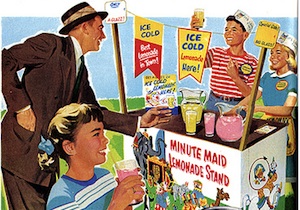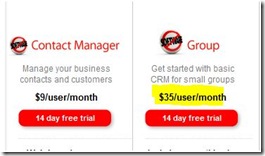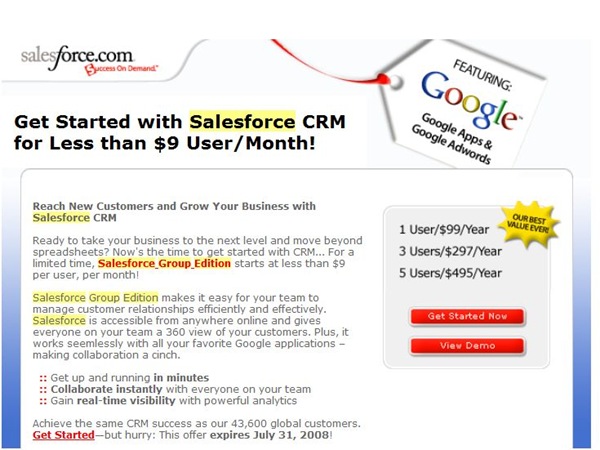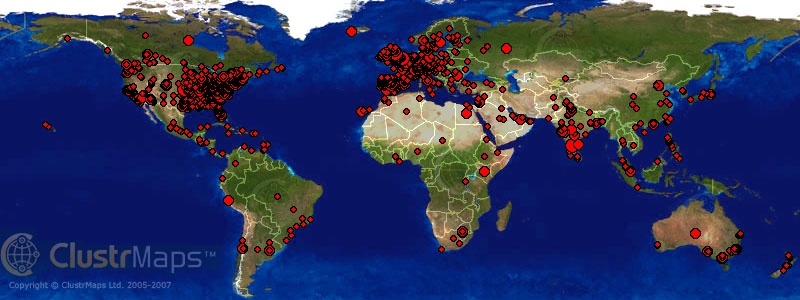
Is Salesforce.com’s glass for SMBs half full (of lemonade) or half empty? I borrowed the lemonade metaphor from Venturebeat’s post announcing Salesforce.com’s new Contact Manager offering for (very) small businesses.
On second thought we should use orange juice as a metaphor – as in disappearing orange juice, by Tropicana which offers less juice in a redesigned pitcher for the same price, and even tries to sell it as a benefit to consumers
Salesforce.com “pulled a Tropicana” with the announcement of their $9 Contact Management edition, and the funny thing is, nobody seems to have noticed it. No, the media duly buys what Salesforce.com PR sells, welcoming the new edition as “giving something back to the little guy” , “breaking through a price barrier”, “making it affordable for SMBs to get in the Cloud”.
Nobody bothered to do some fact-checking, which would have unveiled that in the new Edition is in fact offering less for the same price, a’la Tropicana. Salesforce.com has pulled off a price increase and it went largely unnoticed.
 Prior to this announcement the lowest-priced edition of Salesforce CRM, the Group Edition was priced at $9 per user per month, and it is now increased to $35. The few media outlets that noticed this refer to it as temporary promotion for August, that has now expired. Let’s see just how temporary it was: the “promo” started not in August but in June, and not in 2009, but 2008.
Prior to this announcement the lowest-priced edition of Salesforce CRM, the Group Edition was priced at $9 per user per month, and it is now increased to $35. The few media outlets that noticed this refer to it as temporary promotion for August, that has now expired. Let’s see just how temporary it was: the “promo” started not in August but in June, and not in 2009, but 2008.
This promotion was supposed to expire in July of last year, but it did not – and I correctly predicted it would transition into a permanent price-cut, without much fanfare. Indeed the $9 pricing lasted over a year. And just for the record, prior to dropping the price to $9, CRM Group Edition had cost $20 – so the $35 new price is definitely not just ending a promotion, it’s a price hike of several notches.
But forget history, let’s look at value: having a Contact Manager functionality is certainly useful, although I suspect Google Apps (which is integrated with this Salesforce.com offering) will also offer enhanced Contacts functions. Still, nice – for 2 users only, as that’s the maximum number allowed for this edition. Talk about 2-person companies, let’s remember that Salesforce.com used to offer a free single-user Personal Edition CRM. I’ve just checked my dormant account, it’s still working – but the offering is no longer available for new users.
So let’s see: from free CRM for one user, later $9 CRM up to five users, we’ve gone to $9 Contact Manager for two users. Quite an improvement.
Now if you have 3 users, the lowest entry point to Salesforce.com is now Group Edition at $35 per person = $105 vs. the previous price of $27. And if you have 6 users, you no longer qualify for Group Edition, your entry point now is Professional Edition at $65 per user.
Oh, well. Math lesson over, it’s a nice sunny morning, time for my glass of OJ ( not half full, not half empty – just full. )
)
(Disclosure: I’m Editor of CloudAve, a group blog sponsored by Zoho. This article is cross-posted there.)


 ).
).


Recent Comments